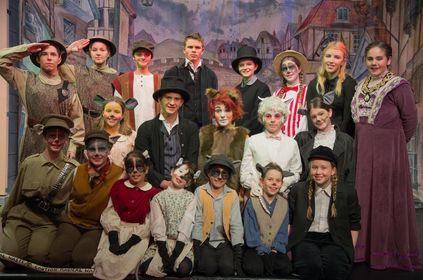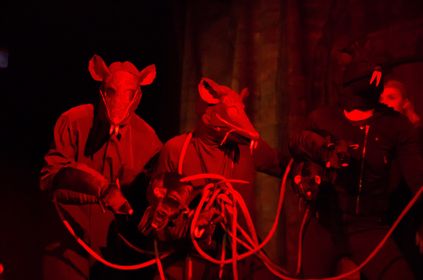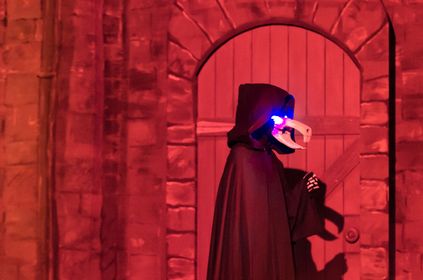#Pratchat62 – There’s a Cow in There
In this very special episode, Liz and Ben are joined by fellow Discworld podcasters Joanna Hagan and Francine Carrel on an existential journey deep into our very souls! Yes, it’s part three of our Thud!-related trilogy, in which we discuss Where’s My Cow?
Every night at six o’clock, Sam Vimes, Commander of the City Watch, reads the picture book Where’s My Cow? to his one-year-old son, Young Sam. But tonight, in between doing the barnyard noises, Vimes starts to question whether this is really the right story for a child of Ankh-Morpork.
Released at the same time as Thud!, Where’s My Cow? is a picture book based on a novel inspired by a board game. Lavishly illustrated by newcomer to the Discworld Melvyn Grant, it takes the couple of pages explaining the book – and the “Vimes street version” – and brings them vividly to life, along with wonderful new visions of some of our favourite Discworld characters. But is Young Sam cute, or in the uncanny valley? What’s the deal with that flying book? What do you think the Discworld’s answer to duct tape would be? Are are you, in some way, looking for your cow? Join the conversation using the hashtag #Pratchat62.
Podcast: Play in new window | Download (Duration: 1:38:43 — 45.6MB)
Guests Joanna Hagan (chef, poet, playwright, author) and Francine Carrel (writer, editor) are the hosts of the Discworld podcast The Truth Shall Make Ye Fret, which is about to reach its 100th episode! Their format splits each novel up into three weekly episodes per month, and they’re going through the Discworld books in mostly publication order, with side trips to Pratchett’s non-Discworld work along the way. Find them wherever good podcasts are available, but also at their website, thetruthshallmakeyefret.com, and on Twitter, Facebook, Tumblr, Reddit, TikTok and probably something else by the time you read this. If you like what they do, please consider supporting them on Patreon.
You’ll find notes and errata for this episode on our web site.
As mentioned above and at the end of the episode, we’ve decided to cut ourselves some slack in the new year by extending the “Thud! trilogy” to four parts. In January we’ll be welcoming back Matt Roden to discuss the Discworld short story “A Collegiate Casting-Out of Devilish Devices“, featuring A. E. Pessimal and available in A Blink of the Screen. We’ll also tackle some more of your brilliant Thud! questions! If you have questions about the short story, send them via social media with the hashtag #Pratchat63 or via email to chat@pratchatpodcast.com.
Finally, if you want to catch The Amazing Maurice before the rest of the Australia, and you’re in Adelaide, the Australian Discworld Convention’s fundraiser screening is on Saturday, the 10th of December, at 3 PM at the Palace Nova Prospect. Get details and book your tickets here! (We won’t be there, but do tell us if you go!)
Want to help us get to the end of our six(ish) year mission and read every Pratchett book – and more? You can support us with a tip, or a subscription for as little as $2 a month, and that’s cuttin’ our own throats! See our Support Us page for details.



